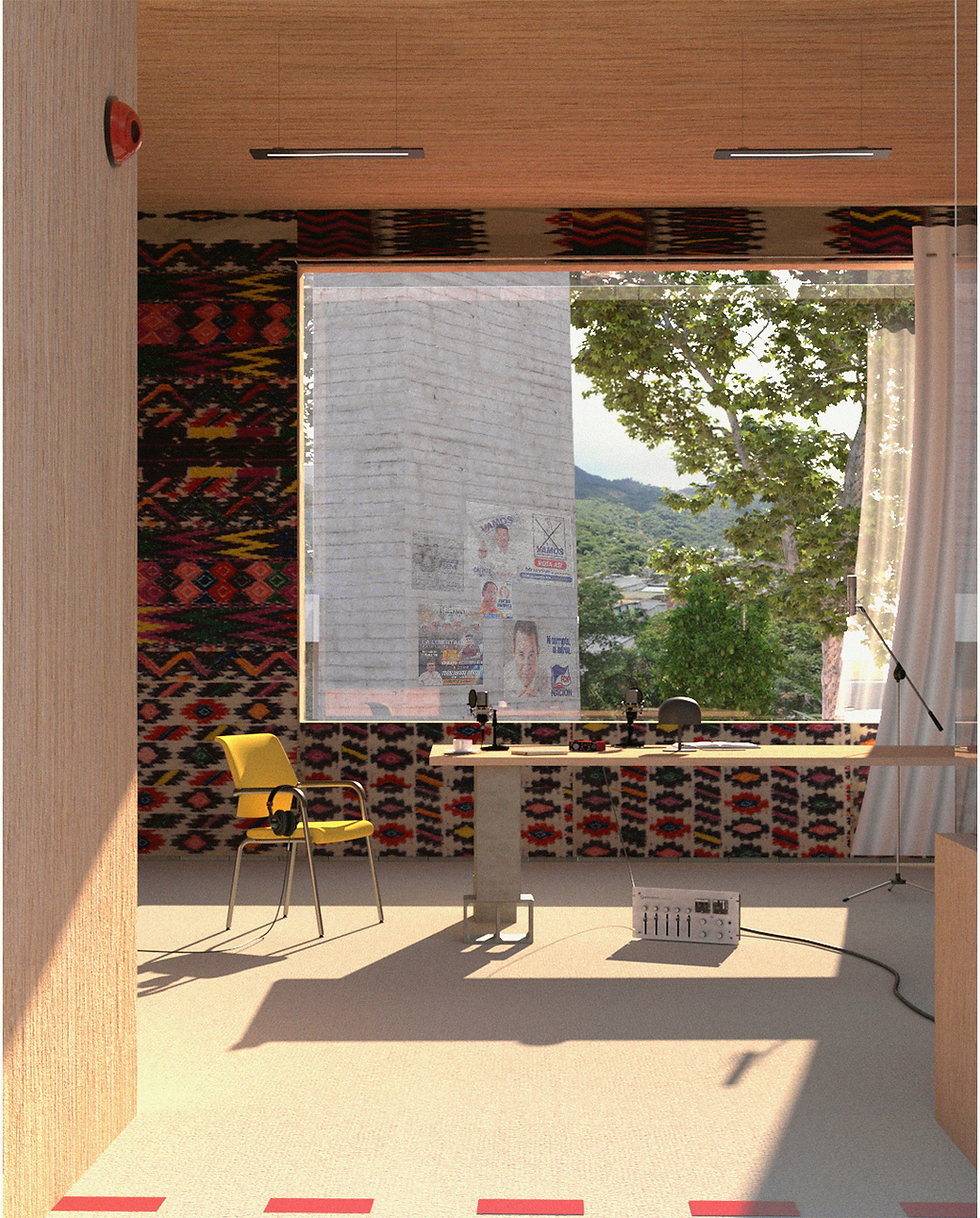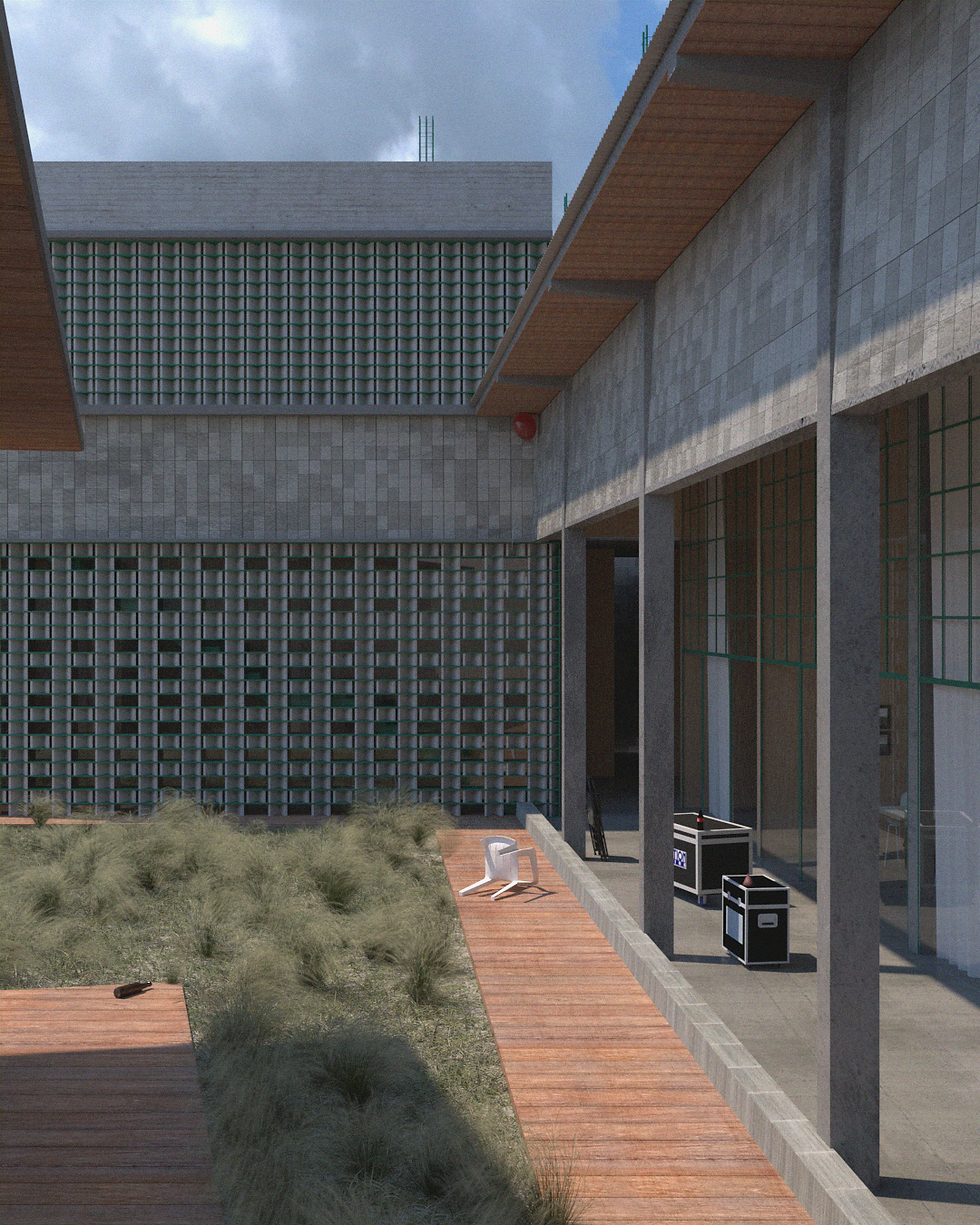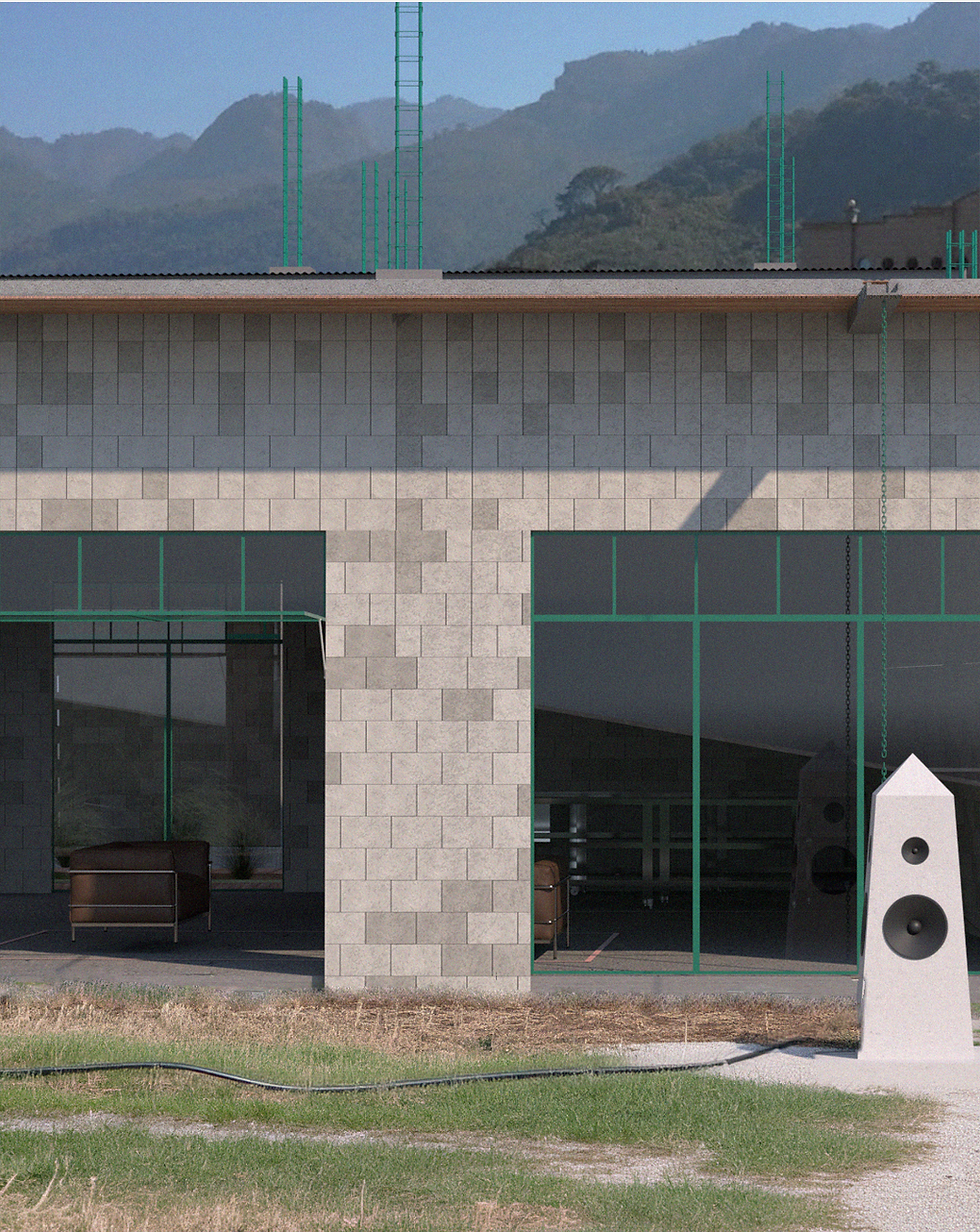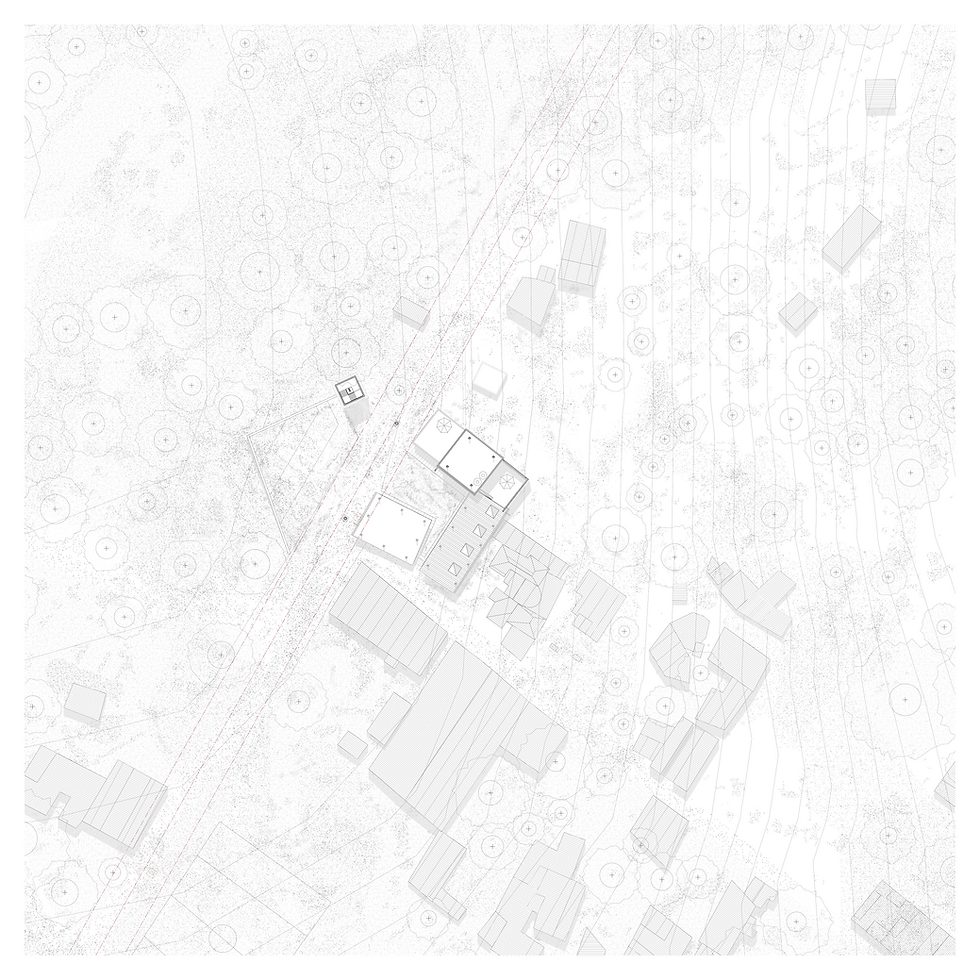Spotlight 16: Didier Iriarte Fattel
- archigrammelbourne
- Jul 7
- 8 min read
This spotlight article looks at a recent M.Arch graduate at the Melbourne School of Design—Didier Iriarte Fattel. We discuss his thesis project—The Other Border. The design draws on Didier's cultural heritage, combined with a thoughtful exploration of social issues affecting the area of Northern and Central America.
-
Lucas Osborn (LO): Before we talk about the project, your cultural heritage and where you come from are important aspects. Can you tell me about your background?
Didier Iriarte Fattel (DI): I am an immigrant, but I am one that has been fortunate enough to do it in favourable conditions. In 2010, my family moved from Mexico to Australia, aspiring for a better life as unfortunately, both economic and social conditions were deteriorating in Mexico at the time. As an 11-year-old, this move felt more like an adventure, rather than a complete change. Whilst I can relate to some of the sentiments immigrants experience, I cannot fully share some of the feelings and possibly traumatic circumstances some have had to and continue to go through as a result of looking for a better life. This is why border policies and their conceptual frameworks are an important socio-economic topic to discuss.

LO: Tell me about the city of La Mesilla, where the project is located. Why here?
DI: The border town of La Mesilla is located in Guatemala bordering the south of Mexico. There is an increasing challenge between border-town collaboration, through border securitisation, despite a rich connection and history of diverse indigenous people inhabiting the region for hundreds of years. In contrast to the hard administrative border of Mexico and Guatemala, these languages move in and out of these borders, representing a more geographic and historical relationship. However, administrative borders have impacted indigenous nations and fragmented them socially, culturally, and politically (Warren, 2013) as they impede political demands and socio-political reform (Naples & Bickham Mendez, 2015). This is especially true for cross-border indigenous nations like Mam, whose collective identification has been lost due to ongoing colonial interventions (Gardner & Richards, 2017). Until recently, many were unaware of the existence of fellow Mam speakers across the border, highlighting the disruptive impact of geopolitical boundaries on cultural connectivity. While not all indigenous people, and indeed not most representatives of the Guatemalan and Mexican states, might see some indigenous cultures as a cross-border nation (as in the case of the Mam), they can still gain political and cultural rights through this collective identification. Therefore, the symbolic struggle over collective identification is significant because it has material consequences linked to Mam rights in both countries and across borders (Gardner & Richards, 2017).

La Mesilla and the neighbouring town of Las Champas present varied topographies as they are located in the skirts of the mountains. This has created an urban arrangement where the grid is influenced by the topography and the relationship between the borders. However, the most unambiguous indication of its arrangement is the highway that crosses the border and becomes one of the most trafficked borders in the region. Its curving, snake-like feature illustrates its natural topography. Whilst the main distribution depends on the grid, the orientation is prioritised to the slope and the aspect of the hill. This may allude to a distribution that may seem ad hoc, but it is pragmatic in its nature, influenced by its commercial and economic hotspots.
Furthermore, the town is cut and scarred by the 10m wide clearance. However, due to these conditions, the inhabitants can be seen to have resisted through pragmatism and opportunity. Unsealed vehicle paths are dotted along the border, giving agency to this cross border causing tensions with the official border crossing in the middle. This combination of existing circumstances was important to analyse and examine.
LO: What architectural aspects did you take from this area?
DI: Guatemala’s economic circumstances and highly spread poverty have resulted in a high proportion of half-built construction and have given rise to a construction phenomenon of "Varillas al cielo," or "rods to the sky,". These are the rebar that have been deliberately left exposed on the roof to ensure the potential for the building's expansion and growth. Serving as a symbol of ongoing development, they signify that the structure remains a work in progress, awaiting the return of economic means for completion. This shared aspiration for continual advancement and economic prosperity is emblematic of both nations (Mexico and Guatemala), reflecting the challenges faced by those with limited financial resources. In my project, the exposed rebar is intentionally accentuated and coated with paint to celebrate this inspiring and hopeful sentiment of prosperity while also serving as a pragmatic approach to the rustication of rebar.
Traditional indigenous buildings, excluding pyramids and such in Guatemala, typically are made out of adobe (mud brick) and bajareque (wattle and daub). These materials can be locally found and offer a more affordable construction method. However, this technique has become more infrequent and it is slowly being lost, particularly after the 1976 earthquake, which overhauled the country’s construction industry and led to the development of earthquake-resistant buildings. Reinforced concrete block and masonry were chosen as the solution and have become the most common construction material. However, criticism over this enforced adoption of cement-based products lingers-
1. Adobe and bajareque construction did not fail because of the material itself but because the buildings had not been appropriately constructed and thus, with proper training of its labour force, this could be solved without the environmental footprint of cement-based products.
2. The concrete and cement industry has had a long history of tension with indigenous communities due to the exploitation of workers and their ancestral lands.
3. The emissions generated from cement-based products are causing high environmental damage.

LO: The US-Mexico border discourse is quite a well-talked-about and publicised issue. Your project looks at the other side of the Mexican border, the border between both Mexico and Guatemala, Why?
DI: Governments seeking to fortify their borders frequently resort to hostile architecture to impede individuals seeking refuge from inhumane conditions, political persecution, and economic hardship. Cross-border communities are similarly affected by the border’s physical and psychological impact. Unveiling the complexity and tension of this often overlooked and relatively obscure boundary, the thesis explores the impact on local communities, advocating a design that fosters cross-cultural interactions, economic resilience, and social sustainability.
The United States/Mexico and Mexico/Guatemala borders highlight different approaches to migration policy and border control. Whilst the United States side offers an expansive physical and high-tech (drones, sensors, and border calculus) border, the other border (Mexico-Guatemala) is seen to be more porous (Corredor & Gracia, 2022) and more primitive, with concrete pylons marking its place and less physical barriers at its boundary alluding to the notion that regional and cross border cooperation is seen to be if not more important at least more present. However, the experience of a migrant crossing the border for economic prosperity or security from one country or the other is once again divergent. Migrating from Guatemala to the US presents a journey that is fraught with peril and danger. Thus, it is not only the initial rigid boundary but one that expands over the south to the north of the nation, having to evade criminal organisations, corrupt officers and la migra (migration officials). On the other hand, migration officers are seen to be the only form of power over migrants. Due to the uptake of Guatemalan migrants arriving at the US government, US policymakers have pressured Mexican authorities to stop them at the southern border through the Mérida Initiative, which seeks to fortify the southern border by providing financial assistance. However, critical interrogation of adapting US border policies in Mexico is needed as it can further marginalise border communities and does not necessarily address the issues at the source.
Furthermore, Guatemala suffered from social instability and civil wars from 1960-1996. During this time, more than 626 separate massacres and a total of 200,000 killings took place under the rule of the anti-communist dictatorship and regime of Lucas Garcia (1972-82) and Gen. Efraín Ríos Montt (1982-83). It is important to note that the CIA backed this regime after the democratically elected president Arbenz promised to take back lands from the US company United Fruit- who owned nearly half of the country. 83% of the killings during the regime mainly targeted minority indigenous groups of ‘Mayan Indians’ even though they represented 60% of the population. Villages were burnt, and indigenous people were displaced; these were known as “scorched earth operations”. US involvement in foreign countries has had its share of negative impacts and thus initiatives and adapting of policies outside their own territory should be examined critically.

LO: I’d be interested to know if you think there are any overlaps between this project and applications here in Melbourne. I know we do not have any border conflicts like in Guatemala, but the theory seems somewhat important to societies.
DI: Whilst Australian territorial conditions and border policies are different, conversations about issues of migration, immigration and First Nations Peoples can also be reflected upon through the lens of what’s happened and happening in Guatemala, Mexico and the USA. Issues of culture, acknowledgement, representation and voicing of First Nations People are still very present in Australia, and similarly with other indigenous communities around the world where lack of representation due to Government policies, social misunderstanding, racism and other forms of socio-economic disadvantages are commonplace. As architects and designers, we have the responsibility to help especially the marginalised through our designs, after all, we are the ones who are designing the built environment we live in.
LO: Did anything interesting come out of the system of the radio and the support infrastructure, and how did this translate into architecture?
DI: Radio has been one of the most accessible ways of communication and information dispersal. The technology to permeate radio waves has significantly reduced the price and can be quickly built. Radios have a long history of transmitting information about war and crime, political, social, and economic. Therefore, they have become indispensable for channelling change within governments and authoritative structures. Prominent media outlets in Guatemala rarely represent their Indigenous people, even though they account for around 40% of the population. This lack of representation continues the endemic cycle of marginalisation and impoverishment. Therefore, community-run radio networks have actively sought to engage with topics that have not been represented. Technically, it is illegal to host indigenous radio shows or to diffuse information as an indigenous person through radio; many activist groups have recently tried to bring about change, but thus far, the government has stayed stagnant and adamant about its position. Some of these groups include Red Centroamericana de Radios Comunitarias indígenas, who try to strengthen indigenous identity and protect their rights through internet radio. The project seeks to undermine the government’s stand by circumventing its politics, legal requirements and ideas of border conditions and infrastructure. Thus, the radio station is built on the Guatemalan side whilst the transmission tower is on the Mexican side. Transmitting through Mexico offers the possibility to transmit long-based radio waves such as AM into Guatemala and reach its mountainous areas, informing isolated indigenous communities on important issues facing their communities. Radio transmissions like this could have saved indigenous lives and communities during the genocide by warning them about the militia’s arrival, giving them time to flee higher into the mountains where military machinery could not operate. Therefore, radio and its architecture can be powerful tools of communication and social resistance.

LO: You just finished your Master of Architecture degree. What’s next for you?
DI: I am going to migrate to Vienna and hopefully I can get some opportunities to explore some of the architecture and furniture-making ideologies and savoir-a-faire from these areas of the world. Hoping to return to Melbourne in some time and keep creating Architecture and furniture.
-
Interview Credits:
Interviewed by Lucas Osborn
-
Project credits:
University: Melbourne School of Design
Project images provided by Didier Iriarte Fattel
-
Citations:
Corredor, J. E., & Gracia, M. A. (2022). Economía local, pasos informales y desplazamientos en una zona porosa: la Región Transfronteriza México-Guatemala*. Si Somos Americanos, 22(2), 8–34. https://doi.org/10.4067/s0719-09482022000200008
Gardner, J. A. (2017). IMAGINING CROSS-BORDER BELONGING: MAYA-MAM COLLECTIVE IDENTIFICATION ACROSS THE GUATEMALA-MEXICO BORDER. In P. Richards, P. Lapegna, D. Smilde, & Suzanne Barbour, The University of Georgia. https://getd.libs.uga.edu/pdfs/gardner_jeffrey_a_201705_phd.pdf
Tompkins, A. (2017). Nancy A. Naples and Jennifer Bickham Mendez (eds), Border Politics: Social Movements, Collective Identities and Globalization. Journal of Contemporary History, 52(2), 474–476. https://doi.org/10.1177/0022009416688182o
Warren, S. (2013). A Nation Divided: Building the Cross-Border Mapuche Nation in Chile and Argentina. Journal of Latin American Studies, 45(2), 235-264. https://doi.org/10.1017/s0022216x13000023



Comments